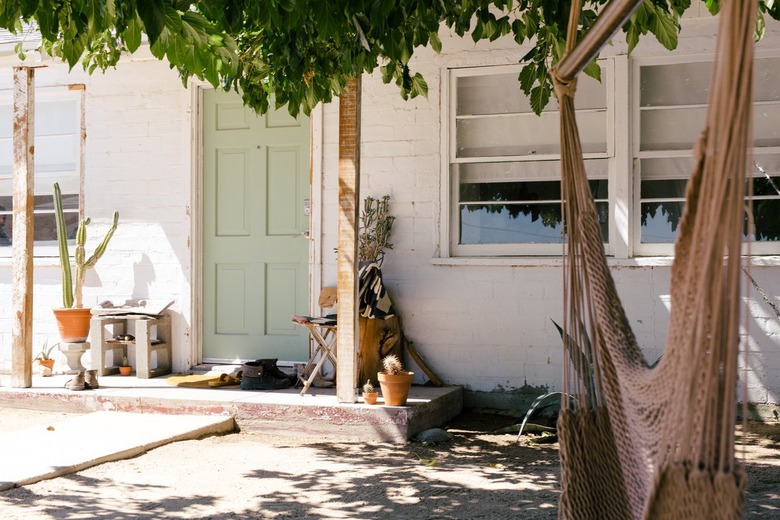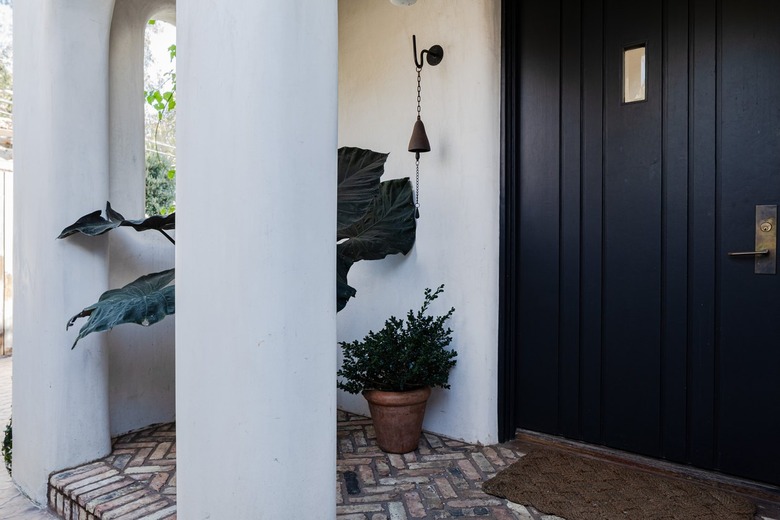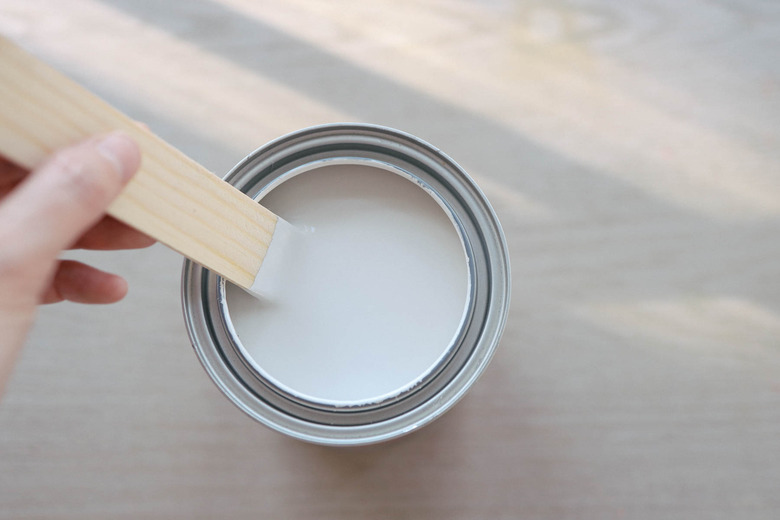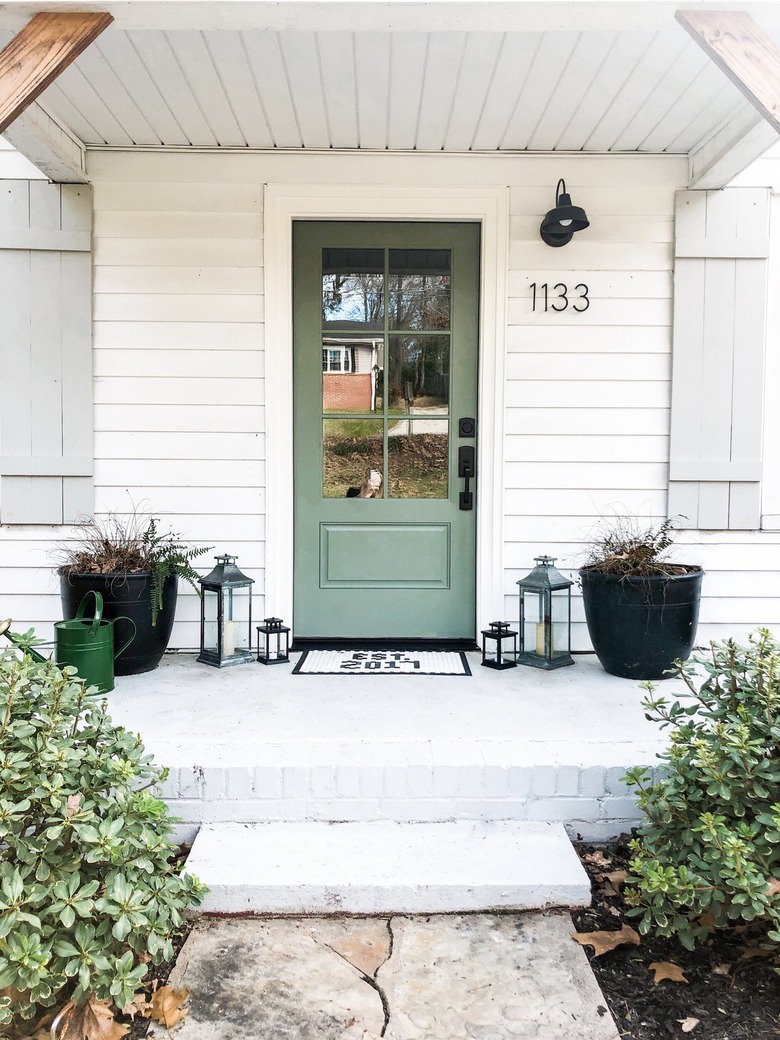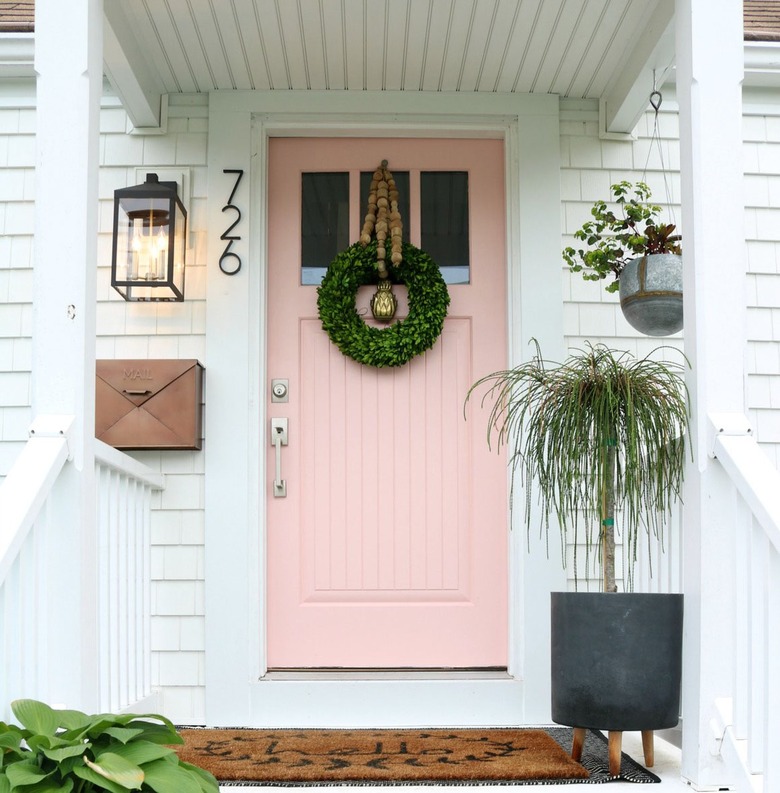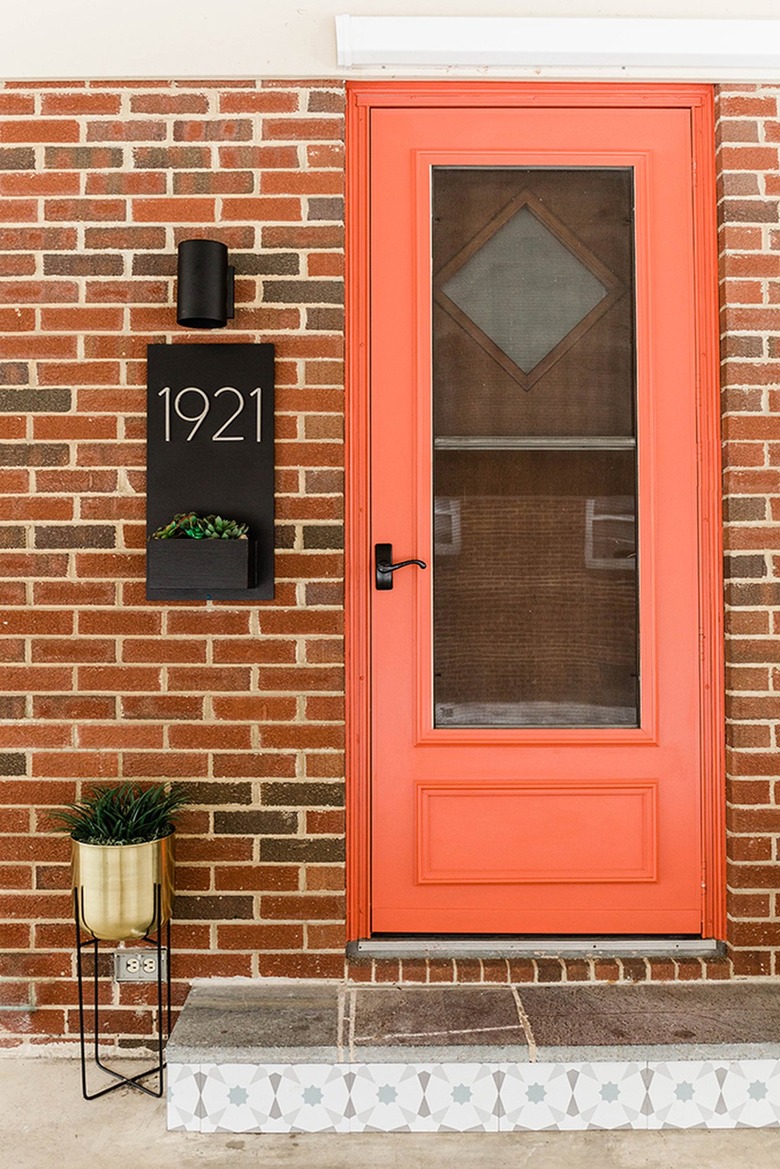How To Choose A Paint And Primer For Your Front Door
We may receive a commission on purchases made from links.
Choosing paint for the front door is a tall order — not only does it need to be durable in all types of weather, but it also needs to match your home's aesthetic and give a boost to your curb appeal (especially if you plan on selling in the near future). The best paint and primer for a front door depends on the door's composition and its condition. A paint that works well on a brand-new, unpainted wood door isn't necessarily the same paint you'd use on an old metal storm door, for instance.
Ready to choose your front door paint? Here's what you need to know before you even start looking at swatches.
Consider Semigloss for Durability
Consider Semigloss for Durability
A good rule of thumb when it comes to DIY painting projects is that the glossier the paint, the more durable and moisture-resistant it is — which also makes it easier to wash without harming the finish. This why even inside a house, semigloss paint is often used for window and door trim and for kitchen cabinets. Semigloss paint offers the ideal durability for a front door or storm door too. By comparison, a flat or matte paint is better at hiding imperfections on a surface, such as a bumpy interior wall, but it isn't as hard and durable as glossier paint, and it doesn't hold up to moisture nearly as well.
An interior-exterior latex paint made for trim and doors, such as SnapDry Door & Trim Paint by Sherwin-Williams, is ideal for a front door, as it also offers protection from ultraviolet rays and weather and resists dirt. It's formulated to dry faster than other interior-exterior latex paints, becoming dry to the touch within an hour (perfect when you're painting anything outside, where weather conditions can unexpectedly change quickly). The better the quality the exterior paint, whether it's for doors or general exterior use, the longer the paint finish should hold up to the elements.
The added sheen or shine of a semigloss paint adds a little pop to the entryway view too, enhancing the visual appeal of your home. While you could use a glossy paint for the door for even more shine and durability, the extra sheen may seem a bit much, which is why it isn't used as often as a semigloss. Semigloss offers the best of all worlds; it's durable and not so shiny that it's blinding when the sun hits it.
Determine If You Need a Primer
Determine If You Need a Primer
If your door is in good shape (i.e. no chipping or major denting) and you're simply applying a fresh coat of paint in a similar color, you may be able to skip the primer provided you clean and prep the surface as recommended on the paint label. New fiberglass and metal doors often have a primer applied at the factory, so there's no need to prime again. Beyond that, a primer is usually a good idea, as it allows for better adhesion and coverage with the paint, especially if you are covering stained areas or working with a wood, such as cedar, that may bleed through.
As with paint, choose a primer designed for exterior or interior/exterior use and that works on the type of door you're painting. The labels on many primers state that the products work on wood or metal doors, but if you're painting an older metal door, a metal-specific primer is another option to ensure a durable and attractive paint finish.
Use an adhesion or bonding primer for a previously stained wood door or a door already coated in an oil-based paint. This type of primer also blocks stains and works well if you're changing the door color from a dark or bold shade to a lighter one. It's also a good idea if you've made repairs to the door, such as filling in dings or holes with a paintable wood filler. Some products, such as Benjamin Moore's Fresh Start High-Hiding All Purpose Primer, also have mildew resistance, which is a nice feature if you live in an overly damp or humid area.
Tip
Zinsser's Bulls Eye 1-2-3 All-Surface Primer is another option that works well for virtually any door type. It blocks stains and inhibits rust and mildew. It's ready to paint in about an hour, which makes it a convenient choice, plus it's easy to find in any store that sells paint. With this or any primer, read the product specifications thoroughly before applying it to ensure the best results.
See If You Can Use an All-in-One Primer and Paint
See If You Can Use an All-in-One Primer and Paint
Any painting task that also requires coats of primer stretches out the project time since you'll need ample drying time for both the primer and the paint. Using an all-in-one primer and paint significantly cuts the project time and often the cost without sacrificing paint quality.
An all-in-one product is a good idea for a brand-new, unpainted wood door. It also works well when you're repainting an older door in nearly the same color. Many all-in-one primer/paints can be tinted at the paint store to the exact color you need. For most door paint projects, it's a good idea to apply more than one coat even when using an all-in-one product.
Think About a Water-Based Paint
Think About a Water-Based Paint
Though you could use oil- or water-based paint for the front door or the storm door, water-based acrylic and latex paints have many benefits. They dry a lot faster, which means you won't have to leave your front door open for days on end until the paint hardens. They're easier to clean up, which means any fresh paint spilled on the porch or on your hands comes off easily with a damp cloth. Cleaning up paintbrushes is also easier; just keep them wet with paint or cover them in plastic wrap until you're ready to rinse them. Then, rinse them in warm water in a wash tub or in a bucket. Oil-based paints require harsh chemical solvents to remove the paint from brushes.
Water-based paints emit far less fumes than oil-based paints. Some are rated as low-VOC, which means they don't release many volatile organic compounds or potentially toxic fumes. You won't feel woozy getting up close and personal with wet paint if you stick with low-VOC latex paints.
Decide On a Color That Best Suits Your Home
Decide On a Color That Best Suits Your Home
Choosing something bold for your front door paint color that's different from the trim and house color can improve the curb appeal of your home, making for a simple home improvement project that can pack quite the punch. It adds a bit of intrigue and sets your home apart from others on the street, even in a cookie-cutter housing development. The best color for a front door really comes down to your own personal preferences as well as how the color looks with its surroundings.
Bold colors, such as cobalt blue, sunshine yellow-orange, red, or even chartreuse, break the monotony of the usual neutrals chosen for the main house paint color. Look at your house from the street or sidewalk and visualize a few colors you'd like to try for the door paint. Write them down and pick up the color-swatch cards for those shades from your local paint store. Tape one color at a time along your exterior door and against the color of the house and door trim to see if you really like the shade. For even more assurance, purchase a sample of the color you like best and paint it on a piece of poster board to test it as a mockup over your door.
If you're set on painting the front door white or another nondescript neutral hue, consider painting the storm or screen door in a fresh color instead. Go all out with a bold shade for the storm door or screen door or simply paint it to match the porch, railing, or trim color, which also visually ties everything together.
